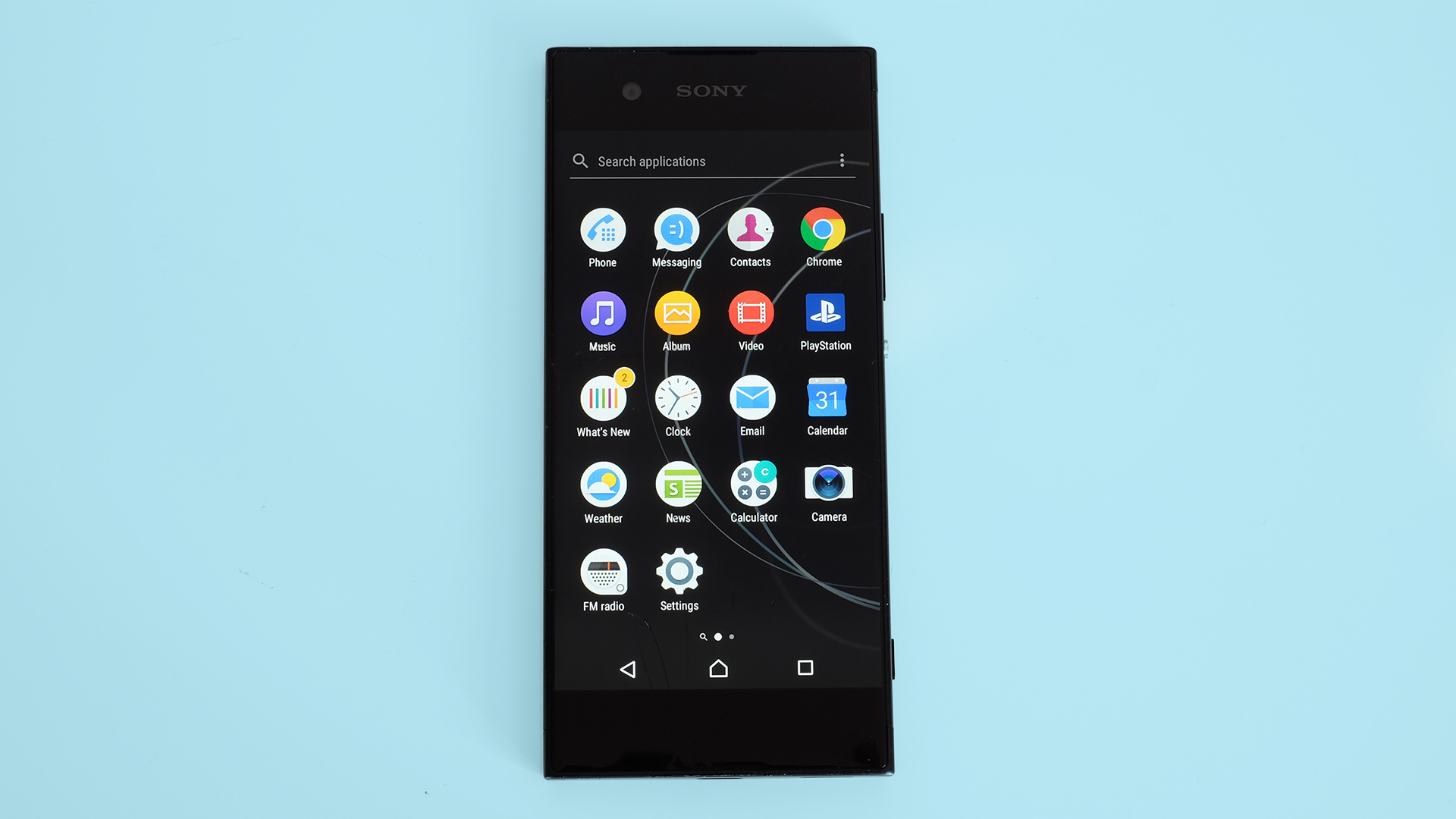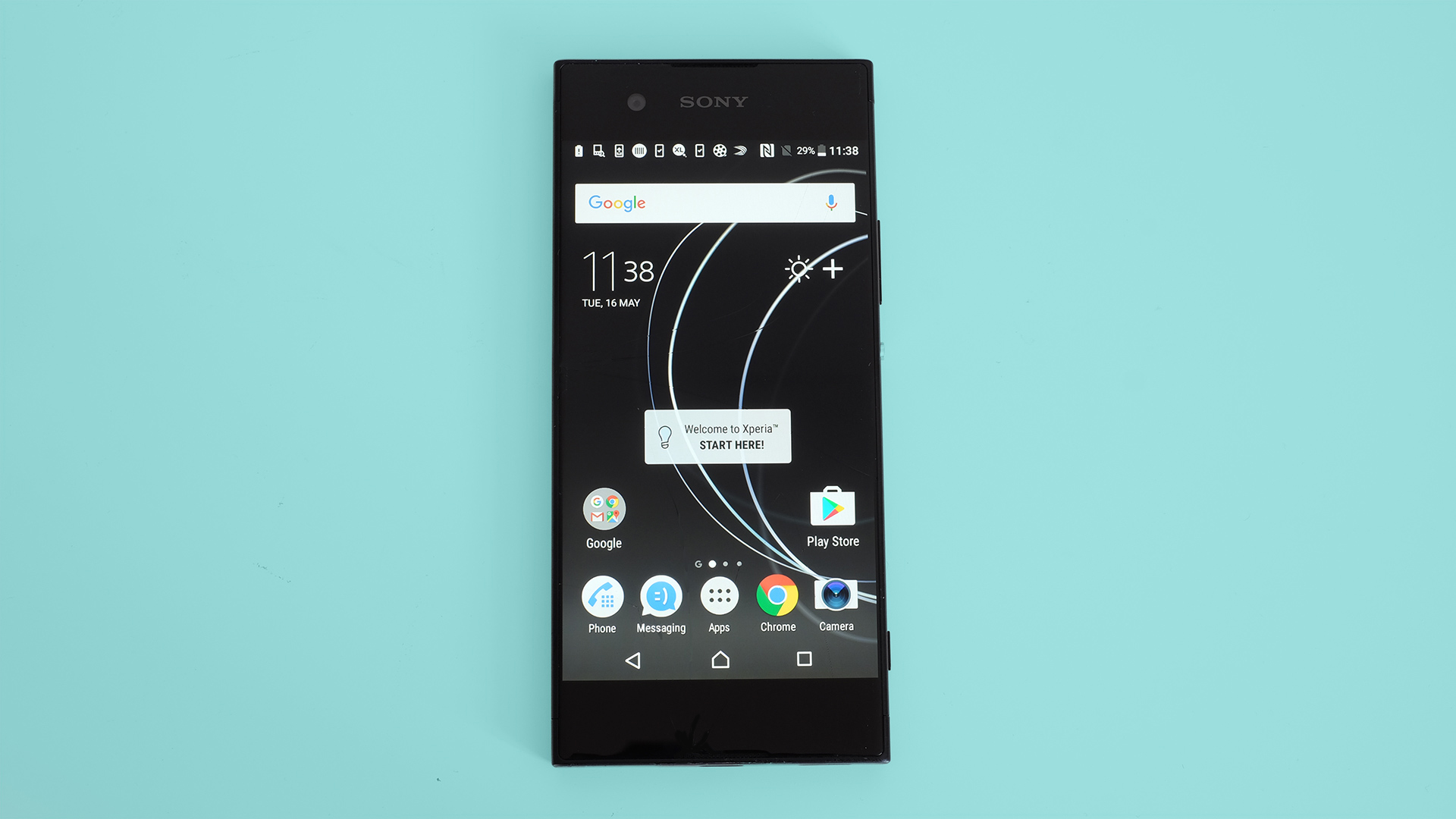TechRadar Verdict
If you want a slim, diminutive phone that won’t make your wallet weep, but has a good camera, the Sony Xperia XA1 is one of your best options. You can get sharper screens at the price, but the photo hardware is hard to beat.
Pros
- +
Very impressive camera for the price
- +
Smart, ultra-pocketable design
- +
Bright screen
Cons
- -
Relatively low screen resolution
- -
No fingerprint scanner
- -
Typical Sony overbaked camera processing
Why you can trust TechRadar
You don’t need to spend a fortune on a phone. We’ve said it a hundred times before, but top-end mobiles like the Samsung Galaxy S8 and iPhone X still seem to be most people’s dream phones.
Fair enough, we can understand why.
The Sony Xperia XA1 is an altogether more practical proposition. It’s the kind of phone many can afford to buy outright, or without a contract that costs as much as a good gym membership.
Sony has aced this phone’s design in a few respects. It looks and feels slick, with metal used in the right places. This is also one of the cheapest phones you’ll find with a camera that wouldn’t have looked out of place on a flagship a year or two ago.
Not every element is perfect. Screen resolution is just 720p, not 1080p, and there’s no fingerprint scanner, which is all but standard in mid-range phones. However, if you can stomach these compromises the Sony Xperia XA1 is a great, sensibly priced handset.
Sony Xperia XA1 price and release date

- Out now in the US, UK and Australia
- Launched at $299, £229, AU$399, slightly cheaper now
The Xperia XA1 first went on sale in April 2017. It’s part of the same generation as the Xperia XZ and Xperia XZ Premium, and it has a brother too, called the Xperia XA1 Ultra.
The XA1 launched at $299 / £229 / AU$399 while its big brother, which has a far larger 6-inch screen, costs £329 (around $420, AU$570). The XA1 has dropped in price with us seeing it as low as £200/$280 and 2GB deals starting in the UK at £15 a month.
Design and display

- Smart, pocket-friendly design
- Plastic back, metal sides
- Relatively low resolution, but display is otherwise strong
The Sony Xperia XA1 looks like a smaller, narrower version of the Xperia XZ. How it is built is rather different, though.
Instead of a lot of glass and metal, this is a mostly plastic phone with some curved metal panels on the sides to give your hands the cool, hard feel plastic lacks. It actually took us a while to realize the back isn’t metal, because the Xperia XA1 feels like such a dense little brick of phone. Sony has done a good job of making this affordable design seem classy.
It has a more expensive look than the Moto G5, for example, which reverses the Sony Xperia XA1’s style with a metal panel on the back and plastic elsewhere. This phone is also reasonably slim at 8mm thick, and has some of the thinnest screen surrounds of any Xperia phone, regardless of price.
The Sony Xperia XA1 does have pretty big blank expanses of black above and below the display, but this just makes it seem long and slender, not harder to handle. Long and slim is often better than short and stubby.

It also has most of the Sony design hallmarks seen in other Xperia phones. The power button is the little metal dot Xperias had before it doubled as a finger scanner, and there’s a physical camera button on the right side. You don’t see those too often anymore.
The obvious missing feature here is a fingerprint scanner. This is an issue given the cheaper Moto G5 now has a scanner, but you’ll just have to decide whether it’s a deal-breaker for you or not. The Sony Xperia XA1 also lacks the water resistance common among more expensive Xperias.
The consolation prize is 32GB of storage, which is enough for most people. There’s also a microSD card slot in the pull-out tray in which the nanoSIM lives.

This phone is a good choice is you want minimalist style without paying too much, and some of you may even prefer its feel to that of the much bigger Sony Xperia XZ Premium. That phone is a bit of a handful.
While the slim screen surround helps, the key to the Sony Xperia XA1’s great pocketability is simple: it has a fairly small screen. It’s 5 inches across and of 720p resolution.
This is where the phone starts to lose its grip on any claims of great value. The cheaper Moto G5 has a 1080p display, and to keen eyes the difference will be fairly obvious.
Text looks less clean and sharp close-up, and you’ll see more ‘jaggies’ in 3D games. However, it’s easy to overstate the importance of this for those who aren’t true mobile phone nerds. The Sony Xperia XA1’s screen is still fairly sharp, and its other characteristics are actually pretty good.

Color is respectably rich and vivid. It loses out to the XZ Premium, which can deliver incredible saturation for an LCD phone, but the Xperia XA1 actually strikes a good balance between punch and a natural look.
The display is also super-bright, if you need it to be, and contrast is very good. Max out the backlight and outdoors visibility is excellent.
It’s still one of the most expensive phones still using a 720p screen, though, so don’t buy if you’re going to notice, and be bothered by, the slight pixelation.
Digging a little deeper, the Sony Xperia XA1 also has special image enhancement modes designed to make your photos and videos look either more powerful or super-saturated. We’d advise not using these to view your own photos, as they’ll look totally different when you transfer them to a different device or upload them to Facebook. It’s a bit like applying an Instagram filter only you can see.
Sony’s standard - and rather unfriendly - white balance controls also reappear in the Sony Xperia XA1, although we found the phone’s default look pleasant. Some Sony phones have a blue skew to their screens, but XA1 is actually slightly warm-leaning.
Andrew is a freelance journalist and has been writing and editing for some of the UK's top tech and lifestyle publications including TrustedReviews, Stuff, T3, TechRadar, Lifehacker and others.

